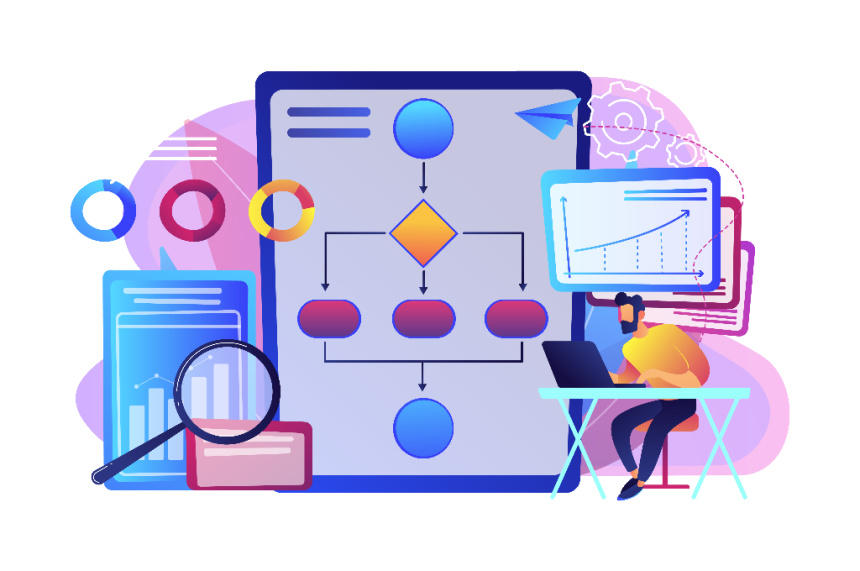Quotation Process: A brief Description
Business | September 25, 2022 | By
What happens when you are on the lookout for buying an electronic item, an automobile, or even a house? You visit multiple vendors and compare prices, and based on your needs and budget, choose a vendor that most closely fits your bill. Supplier selection is a key factor to the success of a product manufacturing company. And, this is where the expertise of the procurement and sourcing teams comes into play. With them lies the responsibility of finding the right supplier who will provide parts at the right quality, when and where it’s needed. Procurement and sourcing teams use a request for quotation to do this.
In this blog, we will understand what is a request for quotation, and also learn about the details present in the RFQ and supplier quotation.
What is a Request for Quotation (RFQ)?

The process starts with the manufacturer’s decision to make or buy. A make decision means the part is manufactured in-house and the latter means to buy the part from a supplier/vendor. The ‘buy’ process starts with a purchase requisition. The requestors fill in the necessary details in the requisition and send it for internal approval. Generally, the requestors enter the RFP details using an ERP system. After purchase requisition approvals, the parts are assigned to the buyers. The buyers then request quotes from multiple suppliers. The request is sent via email or other common platforms. After the suppliers share their quotations, buyers compare them, negotiate terms and conditions, and based on the supplier selection criteria, they finally handpick the best-fit supplier(s).
RFQ Scenarios
Before a product is launched in the market, it is put through several stages of design, testing, and optimization. In this process, organizations need to bring small quantities of parts and test them. So the buyers receive the purchase requisition from the relevant teams and share the RFQ document with potential suppliers.
During design upgrades, some parts are prone to change. Organizations may use the services of their old supplier, if they fit the bill, that is. Else, if they are on the lookout for new suppliers they follow the RFQ process.
If there is a need to cut costs, and if the current suppliers’ prices exceed the company’s budget, companies start looking to partner with other suppliers. Here, too RFQ comes into play.
What do an RFQ and Supplier Quote contain?
The details present in the RFQ document are the same as those in the purchase requisition because it’s the approved requisition that is sent as an RFQ to suppliers. The only difference is the name of the assigned buyer is present in the RFQ document. Now, let us see the major details present in the supplier quote.
-
-
- Supplier and buyer organization name and contact details
-
-
-
- Raw Material details: Raw material type, description, specification, source, raw material rate, quantity, UOM, scrap details, etc.
-
-
-
- Process/Operation details: Process description, Machine/tool/equipment used, Machining details, Labor details, etc.
-
-
-
- Bought-Out/Traded Parts details: Part number, Part description, ERP item code, HSN code, Minimum order quantity (MOQ), etc.
-
-
-
- Inventory Cost details: Inventory carrying cost, Number of days in inventory, Part unit rate, etc.
-
-
-
- Packaging and Logistics Cost details: Packaging item, UOM, Unit rate, Quantity, Distance covered, Shipment weight, etc.
-
-
-
- Post Commissioning and Maintenance Cost details: Description, Frequency of maintenance, Service Life, Maintenance Cost, etc.
-
-
-
- Other Details: Rejection, Price break details, MOQ for Standard and Blanket POs, Margin, Overhead, Tax, Payment terms, Lead time, etc.
-
The details mentioned above are exhaustive. If all the above details are not available, suppliers also send a simple quotation with only the basic details such as Part number and description, Quantity, Weight, Margins, Overheads, Tax details, Payment terms.
Key Stakeholders

The stakeholders involved in the quotation process are almost the same as those involved in the purchase requisition process. Let us see the others,
Buyer
Please refer to the Purchase Requisition blog.
Supplier
Suppliers receive the RFQ document from buyers. They prepare the quotation based on the requirements of the buyer. The suppliers also negotiate with the buyers and finalize the terms and conditions.
The quality team supplier side also comes into the picture during the negotiation with the buyer organization. They also provide the necessary quality-related details to be shared during the quotation process.
Value Analyst/Costing Engineer
Zero Based Costing (ZBC) or Should Costing is an analysis to understand the expenses involved in delivering a product or service. Cost engineers sit down and map the process, understand the raw materials involved, commissioning activities, inventory carrying costs, etc. Then they arrive at a tentative part cost. And if there are parts for which an estimate is already available the same value is verified and used. Buyers can now always start negotiations with suppliers with a ZBC, which is considered a master cost.
In-Context Quotation Process with Zumen
Product Manufacturing companies work with thousands of parts every day. Imagine the number of RFQs then. And, they work with spreadsheets, emails, and ERPs to conduct their RFQ process. The spreadsheets capture only the snapshots of the events in the procurement process. Manually conducting the RFQ process is like working with confusing, inaccurate, and out-of-date information. But, all of this can come to an end with Zumen. To know more, talk to us at [email protected] or schedule a free demo.
















